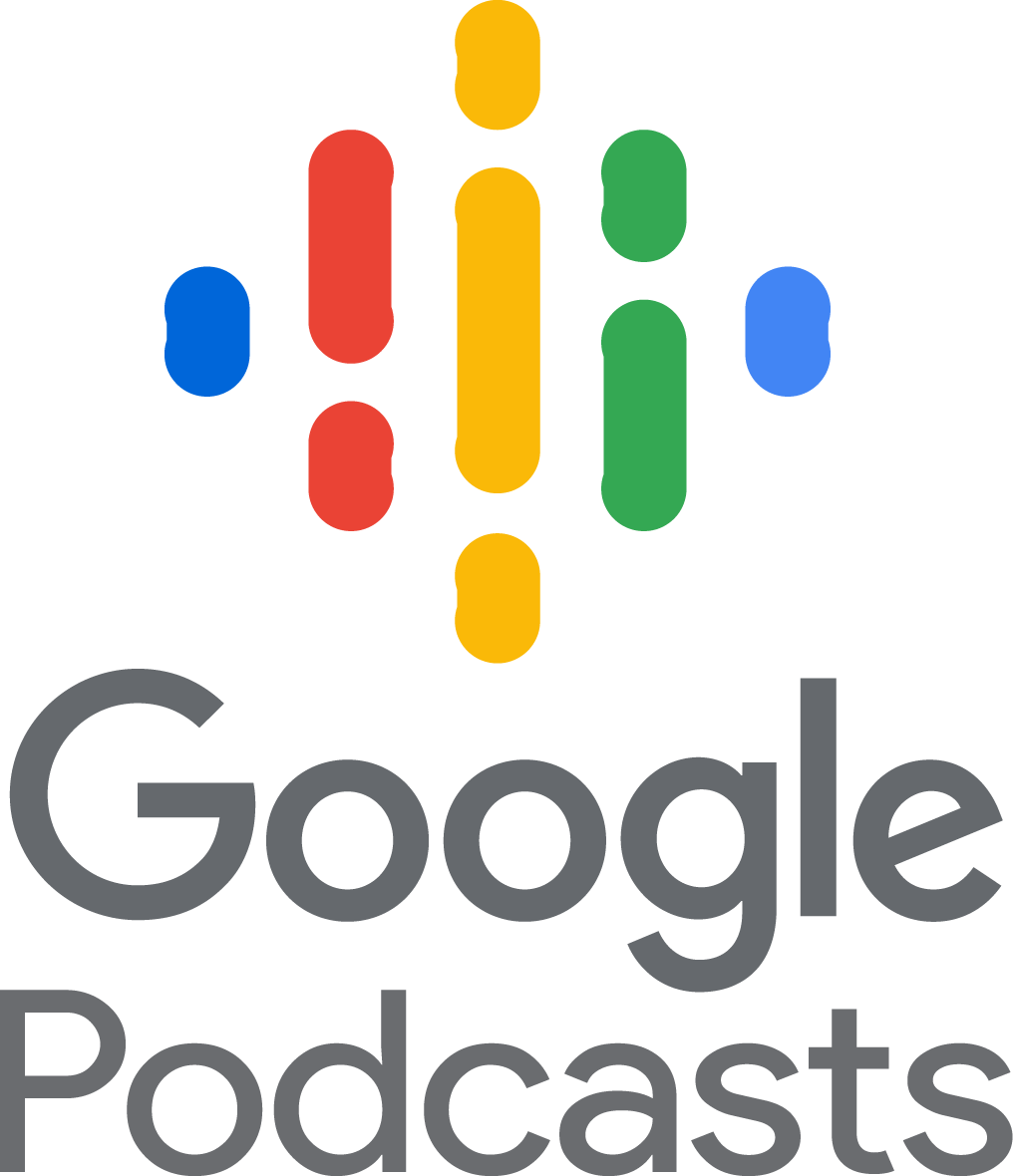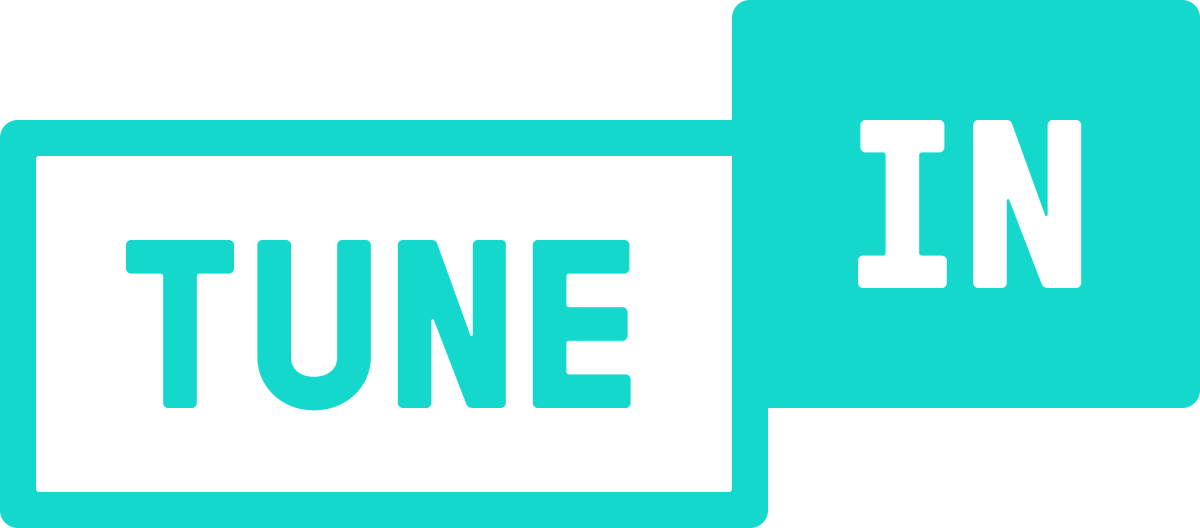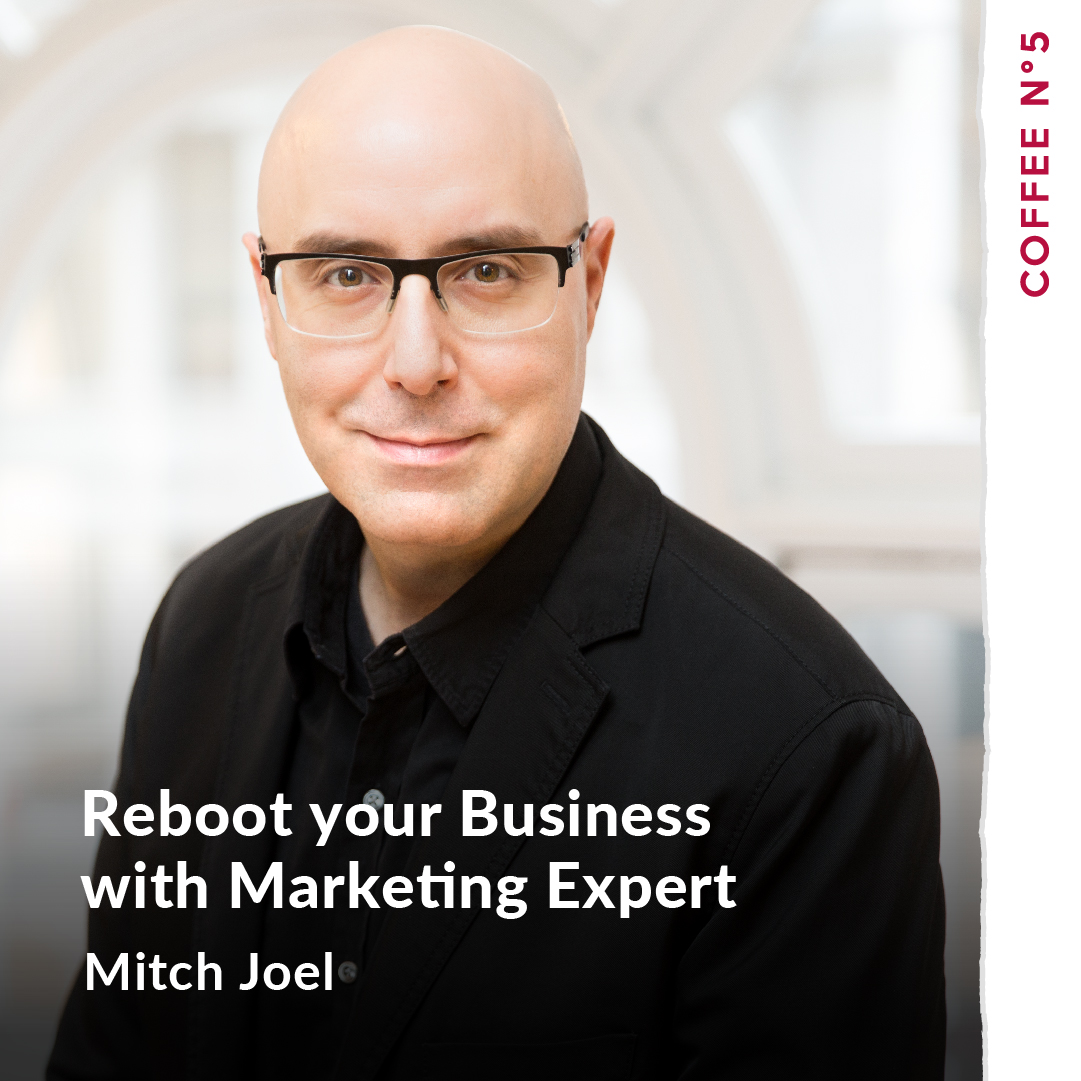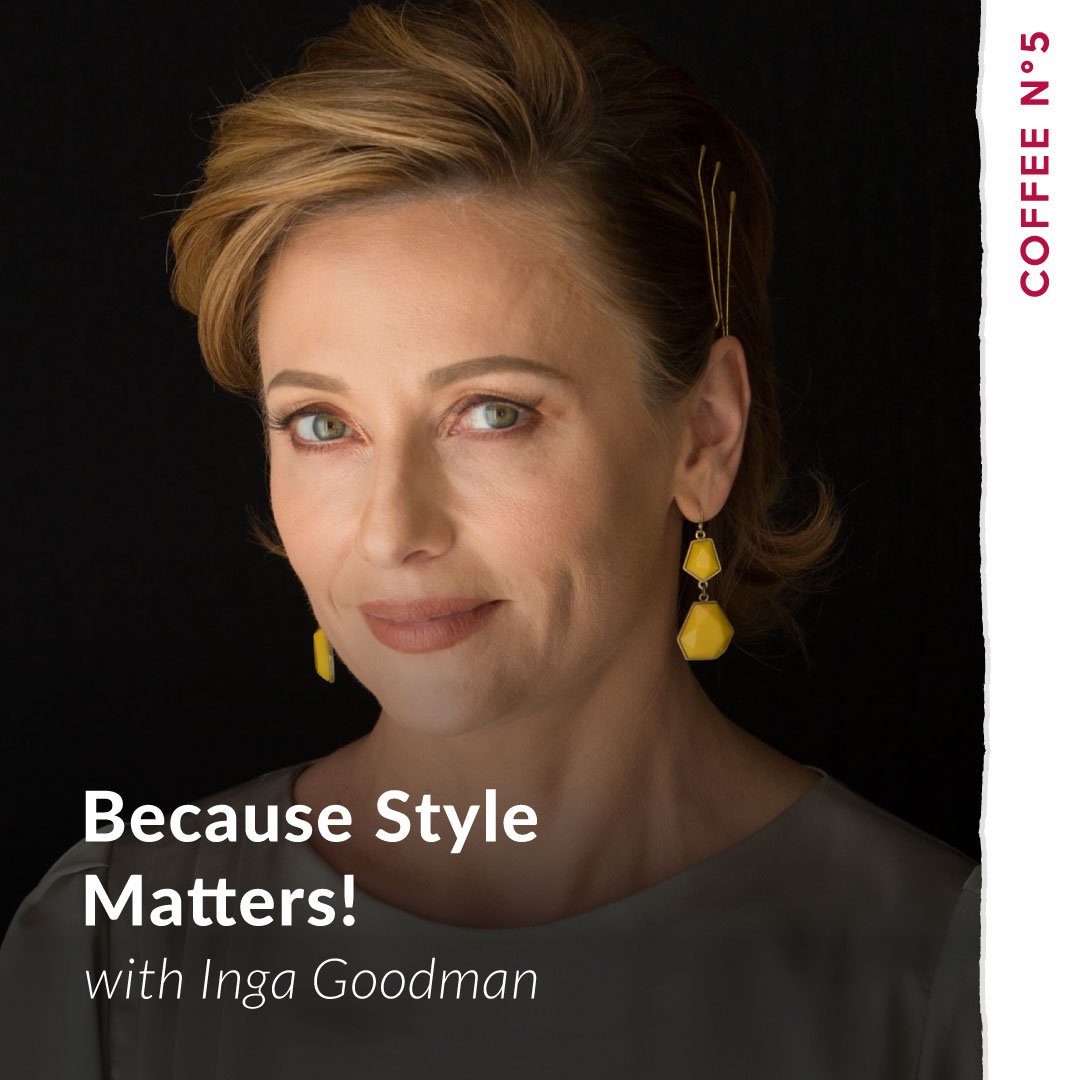Lara Schmosiman (00:01)
Hi everyone. Welcome back to coffee number five. In business, in life, I always find myself on something. always say that I’m terrible at sales and I am. really, if I try to sell you something, I’m just horrible. And I feel like I will already thought that we need to sell ourselves, that we need to put ourselves in spaces that we put that pressure on us that if it doesn’t work.
We fail. And I think that’s a lot. It’s absolutely a lot. And you know what? It’s really hard to find for me people that I align in my thought of how you connect with your partners. You connect with your friends, you connect with your colleagues, your team, or your clients. So I learned about someone that I brought to you today, Blair Earns. Welcome. Thank you so much for being here today.
Blair Enns (01:00)
Thanks for having me.
Lara Schmosiman (01:01)
And I was fascinated when I learned that you’re teaching people not to pitch themselves.
So. ⁓
Blair Enns (01:10)
you
Lara Schmosiman (01:12)
It’s a little contradictory with everything that is out there that is you need to put the pitch, that’s how we work. So tell me, how did you find out that people shouldn’t be pitching themselves and why?
Blair Enns (01:27)
So I’m not just telling people not to pitch. The name of the business and the name of my first book is Win Without Pitching. So it’s not don’t pitch and be poor. Yeah, yeah, yeah. So I grew up professionally in the advertising and design professions on the account management and sales side of the business.
Lara Schmosiman (01:40)
No, of course not. Never idea.
Mm-hmm.
Blair Enns (01:53)
Of course,
we never refer to it as sales, we call it new business because we don’t like the S word. So I grew up on that side of the creative professions. And in the creative professions, the way historically, this is kind of initially known as the advertising disease, ad agencies would win business through a pitch. So they would basically solve the client’s problem as proof of their ability to solve the problem. They would do the creative pitch, they would pitch the creative so that they could get the entire media budget.
Lara Schmosiman (01:58)
Yeah.
Blair Enns (02:23)
So they basically pitched the creator for free and then they would spend the millions of dollars in media and they would take their 15 % commission. And then that revenue model went away. And now creative firms, including ad agencies, are paid for that creative and they’re paid in some cases very well for that creative, but it’s still this highly ingrained bad practice of pitching your thinking for free. So…
Lara Schmosiman (02:33)
Mm-hmm.
Mm-hmm.
Blair Enns (02:50)
Knowing that there was a better way, finding a better way, I started this business and wrote the first book for those creative professionals, telling them that you don’t have to give your thinking away for free. Now, as the years went by, this phrase, win without pitching, started to appeal to more and more people outside of the initial target market. And so they would come to our training programs and I would refer to them as outliers.
consultants, engineers, entrepreneurs. They were drawn to this message of win without pitching, but they weren’t giving their thinking away for free in a pitch. What they were doing, you’ve kind of alluded to this, is they saw the sale itself as a big pitch. Here’s why you should hire me. And baked into our approach, our model is the idea that if you’re any good at what you do and if you’re appropriately positioned in the marketplace,
Lara Schmosiman (03:36)
Mm-hmm.
Blair Enns (03:47)
It’s not your job to talk people into hiring you. Your job begs the question, what is your job? We can talk about that. And it changes throughout the arc of the sale. I just fundamentally believe that I’m not saying you should just sit back and let business come to you, but it’s fundamentally ⁓ two parties, buyer and seller, have to decide if it makes sense to do business together. And I think one of the worst dynamics you could create in such an environment
is to have one party pitching, explaining why you should hire me, and the other party sitting there with their arms crossed as judge and jury.
Lara Schmosiman (04:25)
Absolutely.
That’s not a conversation.
Blair Enns (04:28)
No.
Lara Schmosiman (04:30)
And I found that we’re so aligned. I never realized that we were so aligned and I never thought about this. I never processed it like you, but I never feel like I can, when I talk to someone is, and I do my pitching, non pitching ⁓ is like, okay, let’s see where you are as a company. What are your goals? And let’s listen and see how I can help. There is a problem. We can offer a solution.
Blair Enns (05:00)
Yeah, it sounds perfectly logical when you say it, Lara. It sounds perfectly logical, right? And it is perfectly logical, and hardly anybody does it.
Lara Schmosiman (05:06)
Yes.
But also I want to be a little devil advocate here because I’ve seen the other two sides of the coin. Of course you want to show your worth and also for a lot of companies, my company didn’t start long ago. I don’t have like super big clients that they say, ⁓ this woman work with Coca-Cola, which I didn’t ⁓ as an agency.
The thing is when you give away knowledge, you say, this is what I want to do, or this is what I propose to do for your business. A lot of people will take it away and say, yes, great ideas. I’ll do it by myself or I work with someone else. And I know that it’s a risk, but I know a lot of people, a lot of companies that are affected by this mentality. So how did you deal with this process and what are your recommendations in these cases?
Blair Enns (06:05)
Well, if you think of the sale as a domain in which, ⁓ so a lot has to happen in the sale, both parties have to decide whether or not it makes sense to work together. But at some point you have to prove, prove might be a high word, but you have to communicate a high degree of certainty to the client that you can solve their problem or create value for them.
Lara Schmosiman (06:30)
Mm-hmm.
Blair Enns (06:32)
What you don’t want to do is you don’t want to cross the line that separates proving your ability to solve their problem from actually solving their problem. So if the knowing of what exactly what you would do is valuable, then you should not give away exactly what you would do in the sale. Like an ad agency would give away the creative concept and maybe even the script of the television ad.
⁓ they would pitch this and the client could say thanks we’ll take that and we’ll do it they could pitch the media strategy a Detailed media plan and the client could say thanks. We’ll take that and we’ll do it So that’s an example of crossing the line that proves your ability that separates proving your ability to solve the problem from actually solving the problem
Lara Schmosiman (07:08)
Mm-hmm.
⁓ It’s a thin line though, because many times you need to create the scope of work. And in those scope of work, you need to align the services that you will provide. So where do we separate that, the strategy part from the sales part, because you need to connect both of those just to price it right.
Blair Enns (07:43)
Yeah.
If you need to do a whole bunch of work to be able to scope the project and price the engagement, then you should get paid to do that. And the way you get paid to do that upfront work is you sell a diagnostic. So you would have a packaged approach where you would go in and get an understanding of the client situation, get all the technical specs, get all the information that you need to determine what it is that you would do. So you get paid a little bit of money to do that.
That’s how I’d have you think about it.
Lara Schmosiman (08:18)
Okay. ⁓ What is the challenge that you’ve seen in people approaching this not pitching approach?
Blair Enns (08:28)
The biggest challenge is if you’ve been selling this way for a long time, old ideas die hard.
Lara Schmosiman (08:37)
Okay.
Blair Enns (08:38)
we ⁓ build these muscles. And then when we’re asked to use new muscles, it’s difficult. We reflexively go to, I’m mixing metaphors here, but somebody once said, ⁓
There are two levels of success in business. So the first level is basic, ⁓ it’s product market fit where you come up with something, you go to the market, the market validates what you’ve developed, they pay you money, and even you’re starting to make some profit and you have a going concern here. ⁓ And then the next level,
So you think of two levels of success. First level of success is like, I’ve got a business and I have a nice comfortable living. And then the second level of success is what everybody at the first level strives for. Maybe it’s generational wealth, it’s scale, it’s whatever your dreams are. There’s the place you want to get to next. The tools that get you to the first level not only don’t get you to the second level, they actually get in the way.
So how do you get to the first level of success? Think of like what’s the advice you give to your kids when they’re young? It’s work hard, number one, say yes to pretty much everything. That’s how you succeed in business at the beginning. You work hard and you say yes to pretty much everything. And then when you want to get to the next level of success and break through whatever ceiling you’ve hit, you have to down those two tools, hard work or effort.
Lara Schmosiman (09:53)
Mm-hmm.
Mm-hmm.
Blair Enns (10:12)
and saying yes and replace them with two other tools. And instead of saying yes to everything, you start to say no to most things. So you become more discerning, more specialized. And Warren Buffett has this great line, the difference between successful people and really successful people is really successful people say no to almost everything.
Lara Schmosiman (10:36)
and that’s really smart.
Blair Enns (10:38)
So you go from saying yes to everything to saying no to almost everything, and you replace hard work with risk.
Lara Schmosiman (10:48)
Mm-hmm.
Blair Enns (10:49)
Peter Drucker said in business, all profit is derived from risk.
Lara Schmosiman (10:55)
And that’s true as well.
Blair Enns (10:57)
Yeah. So, but the longer you’ve been stuck at the first level, the longer you’ve been using these tools of working hard and saying yes to everything, the harder it is to put those tools down and embrace tools that are basically the opposite of it. Now let’s bring it back to a sales context, hard work and saying yes to everything. This is how you’ve been selling for years. You hustle and you say yes to everything. And you want to get to the next level? You need
Lara Schmosiman (11:24)
I have a question. Before
we get to the next level, and I have a lot of questions about that, is one of the parts that I heard always in cells is that the hardest part is to deal with rejection and that you need to create the thicker skin.
Blair Enns (11:26)
Drop Earth Tools.
Lara Schmosiman (11:47)
So how do you feel like by using the non-pitch approach and more connecting with people is it less risk of fail rejected or it’s worse?
Blair Enns (11:58)
So
my domain is the sale of expertise. So again, it started with creative professionals, but it’s now we teach anybody who is basically an expert advisor, typically of any kind, marketing, creative consulting, engineering, architecture, ⁓ anybody who is an expert advisor first and a salesperson second. And the first we may see…
Lara Schmosiman (12:03)
Mm-hmm.
Blair Enns (12:25)
Mistake we make in sales is we think that selling the act of selling is universal and a sales model for one domain applies universally and other domains. It’s not true. I would argue that the sale of expertise is a little bit different from the sale of goods or transactional services because in the sale of expertise, the sale is the sample of the engagement to follow. So you, I would have you behave in the sale the same way you would behave in the engagement.
You don’t need to behave differently. And you should understand that in the sale, this is where the roles are established. So, and I’ll make a generalization and say that you can either be positioned as the expert advisor or you can be positioned as a vendor. And that place that you occupy in the relationship with this client will be established in the sale.
before the engagement and it will be established largely based on how you sell. So this idea of the rejection proof salesperson that is going, going, high drive rejection proof that is valid in some domains, but is not nearly as valid or valuable. And in fact, it starts to get you into trouble in the domain of selling expertise, especially when you have a finite client base. It’s not about
Lara Schmosiman (13:36)
Mm-hmm.
Blair Enns (13:49)
constantly increasing the volume of your clients, it’s more about selectively choosing those clients who are the best fit for you.
Lara Schmosiman (14:01)
I love that you say that because it’s something that I had, it was my learner learning curve as a business owners that I had to understand that not every client was a good fit for me. And that’s what I started saying no. And either you feel it or that you realize that you’re just not aligned and you’re not going to be working together well. And that’s when the no it’s really important because that will set me up for failure.
when I knew that I would fail and the client won’t be happy and we won’t have a great success study.
Blair Enns (14:36)
Yeah. And how do you say no? You say no by having the conversation that you talked about at the top. Right? So the client might come to the table with this defined selection process that keeps you at arm’s length. You’re not allowed to talk to the decision makers. You have to do, submit all this information, et cetera. It’s very hard for you in that moment to determine if there is a good fit here, if this is worth investing time in. But if you’re allowed to have a conversation and you show up with the right questions, you can figure out
fairly quickly if this is a good fit for you.
Lara Schmosiman (15:08)
Absolutely. I’m a marketer at heart, so I’m talking about funnels always, but there is a part of the funnel that a lot of people don’t talk about, which is the pre-funnel. And which I think is the most important part of the funnel actually. That if you don’t know who’s your target audience, who you’re going to be putting into the funnel, you don’t have a funnel. And I think it’s part of the sales process too.
What’s your take of how do you approach and you look for new clients? Because I think that’s key factor of how to approach the business development side. Not going everywhere, going to the right place.
Blair Enns (15:54)
Yeah. So I’ve written a book recently. It’s called the four conversations, a new model for selling expertise. it, it’s a model. It’s a way of thinking about the sale where you break it down into four linear and discreet conversations. And the first conversation is called the probative conversation. It’s a conversation in air quotes that happens without you present. It’s a function of the work that you do to build your reputation. So.
Lara Schmosiman (16:04)
Great.
Blair Enns (16:23)
How do you have a probative conversation? Where the goal of the probative conversation is to move in the mind of the client from this position of a powerless vendor, like one in a sea of many similar vendors, to the expert. That’s the goal of the probative conversation. So how do you have that probative conversation? What are the frameworks that you use to have that conversation or create that reputation? And the first step is you have to figure out where are you going to play and how are you going to win? Who is your target market?
What is your ideal client profile? Who, you have a vision of future success, right? What clients, what future clients will represent a step towards that vision of success and what would represent a step away from that vision? So it starts with this visioning exercise, positioning, even fundamental business strategy. Where are we going to play? How are we going to win? Positioning, how are we going to position ourselves relative to
Lara Schmosiman (16:59)
Mm-hmm.
Blair Enns (17:21)
others who are similar to us. And then your marketing, how are we going to prove our expertise out in the public domain and build a reputation as being seen as the expert? that’s all, you know, that’s the first conversation in a four conversation model, but it aligns nicely with what you just said. It’s the advance work. You call it pre funnel. It’s the advance work upfront of understanding.
Lara Schmosiman (17:43)
Yeah.
Blair Enns (17:47)
who you’re going to do business with and how you can add value to their businesses or lives.
Lara Schmosiman (17:51)
And
something that you said before really resonates with me when you’re talking about the two stages and the first stages of saying yes and that you take any business or any job at that time. But what do you realize that when is the time to say no? When is the time that, and how do you scale from there? How do you make the jump?
Blair Enns (18:19)
When is the time to say no? I don’t think of it as a time to say no. I think of it as you know who you want to do business with and you know who you don’t want to do business with. And the longer you’ve been in business, you start to get a sense of the ones in between, ⁓ this looks problematic. And if you identify a potential client is potentially problematic, then you would speak to that in the sale.
Lara Schmosiman (18:39)
Mm-hmm.
Blair Enns (18:48)
Now, earlier this morning, I did a workshop with a bunch of clients where somebody made the point that he’s been in business for 30 years. And he said, after 30 years, you see the patterns. And as soon as you identify that somebody is not likely to be a good client for whatever reason, you just speak to it right away. Now, when you’re still at that first level of success, you’re leaning on hard work, enthusiasm, saying yes to everything.
Lara Schmosiman (19:04)
Yeah.
Blair Enns (19:16)
You probably don’t have the pattern library built up. So you talk yourself into thinking this is going to be a good client where a few more years of experience would show you that this is not going to be a good client.
Lara Schmosiman (19:28)
I wish I had that experience,
to be honest with you. Because that’s how the clients and you really, I feel that’s a gut feeling. And a gut feeling is not magic. It’s that you use your experience and what you know in, and honestly, you need those bad experiences to grow as a leader and to grow as a business owner.
Blair Enns (19:47)
You do. Yeah, you totally do. Yeah. You can’t save
people from those. They have to live through those horrible experiences and they become so valuable later on in your business.
Lara Schmosiman (20:00)
Yeah, absolutely. And don’t forget those bad experiences. Those bad experiences is where it take you where you were and you learn from them. So, and that’s what contributes to your gut feeling and to your personal growth. But still I see, and let’s talk about money and charging because price, that’s another thing that you talk in your books is about how to price yourself. So where do you start with that? There are a lot of people right now and
Blair Enns (20:13)
Yeah.
Lara Schmosiman (20:29)
I’ve seen it more and more people trying to go into consulting. I don’t know if this is a trend, is something temporary from the economy, but what do you see in the marketplace with consultants? And also I have to be honest with you, I’m having an issue with consultants that consultants are, and I know a few consultants that I trust and colleagues and I work with them all the time, but they’re all school consultants and they’re having expertise.
I feel like now the word consultant is, ⁓ I can do everything for you.
Blair Enns (21:02)
Well, if you’re seeing more consultants right now, and so am I, and you’re also seeing more fractional people like fractional chief marketing officers, chief finance officers, chief technology officers, you’re also seeing more coaches. That’s a function of the economy. So it’s a function of large organizations kind of downsizing. Most of these people are in these roles temporarily until they get hired again in a new full-time gig.
Lara Schmosiman (21:10)
Mm-hmm.
Mm-hmm.
Blair Enns (21:30)
I think the number of full-time consultants probably doesn’t change a lot, there are always these transit ones that come through.
Lara Schmosiman (21:38)
But I’ve seen those transit ones are really affecting the industry and even ⁓ brands in this case that I work with, ⁓ with the knowledge that I’m trying to apply.
Blair Enns (21:53)
Yeah, so you’re not talking about, are you talking about how these consultants are affecting how your own services are perceived?
Lara Schmosiman (22:02)
No, I’m not talking about my services. I’m talking about that consultants normally they’re coming from working in big brands and then in their big brands, their job was very narrow. And then they try to consult smaller companies with the mentality of being in the big company and the budgets of being in the big company. So it’s probably not a hiring that it should have been made, but
It’s like not knowing the target audience that they’re going to be consulting.
Blair Enns (22:39)
Yeah, it’s hard to generalize about that, but I do know what you’re talking about. I was having this conversation with somebody the other day about ⁓ talking about independent marketing agencies where the owner starts the business. The owner has never worked in a large ad agency. They start their own marketing firm and they do things their own way. They find something that works. They build a successful firm. Then at some point they think, you know,
I’m going to hire somebody who has big agency experience. So they hire somebody from the big New York ad agencies, then that person comes in and they’re looking for them to bring some big agency magic. And instead they’re a wrecking ball. just, ⁓ they can destroy everything. ⁓ Because I don’t know if this works, if it’s similar, I’m sure there are some similarities in other ⁓ categories.
Lara Schmosiman (23:11)
Mm-hmm.
Yes.
Yeah.
Blair Enns (23:32)
But certainly in the agency world, the way large agencies operate, small independent agencies should not be taking their cues on how to sell, how to operate, how to make money from large agencies. The large agencies are in horrible trouble right now.
Lara Schmosiman (23:50)
I know. And that’s exactly when I work in larger agencies. And that’s why when I saw I created my own agency, I say I first created a culture. I first created my own systems. Of course, with scale, had to adjust those systems, but I never tried to duplicate what I saw in the big agencies.
Blair Enns (24:12)
Yeah, I think you leave to start your own because you have ideas of what you want to do differently. So when that business owner who’s never worked in a large agency decides they want to bring some of that magic in, they realize there’s not a lot of magic there. And it’s an entirely different kind of it’s a I guess I would say it’s an entirely different business model. It certainly is a different way of selling a high cost of sale where the assumption is that they have no power in the buy sell relationship because everybody is
Lara Schmosiman (24:25)
Mm-mm.
Blair Enns (24:40)
It’s basically an apples to apples comparison and all the agencies are effectively the same and have the same capabilities, which isn’t the case when you get down to the independent firms.
Lara Schmosiman (24:48)
Or even
the structures, when I worked in large agencies, there was duplication of roles that they were overlapping and it was creating more confusion that when you have a smaller agency, you need to have people that are more invested. And I think that this is, mean, the agency world is what I know, but ⁓ I think that happens in every company.
Blair Enns (25:14)
Yeah, ⁓ the smaller you are, the more hats everybody is wearing. Right? So you have an entrepreneur. And if it’s founder led, it’s an ⁓ entrepreneurial culture. It’s an efficiency seeking culture at a large agency where ownership is separated from management. And ⁓ the opposite of efficiency seeking is innovation. So small agencies are innovative entities. ⁓
Lara Schmosiman (25:21)
Yes.
Yeah, but.
Mm-hmm.
Blair Enns (25:43)
and you bring in the people from an efficiency seeking culture, it’s quite the clash.
Lara Schmosiman (25:49)
Absolutely. So we were talking about pricing. So how do you structure pricing for someone who’s just starting as a consultant, as an agency, as a business? And what’s your take on how to structure your business at certain points?
Blair Enns (26:08)
Well, I don’t think there’s a right way to do this. So first of all, the structure issue. I would first have you think about standardization versus customization on two axes in two dimensions.
Lara Schmosiman (26:13)
Mm-hmm.
Mm-hmm.
Blair Enns (26:28)
The first axis or dimension is delivery. Are you going to standardize your services into productized services where you have there are certain set number of services that you can buy with no variation that the client can buy that you are selling with no variation from those standardized products or is yours going to be a customized delivery firm? in a typical, a lot of creative firms, it’s customized where
Lara Schmosiman (26:33)
Okay.
Blair Enns (26:58)
They view ⁓ every client as a blank slate. Every new opportunity is unique and therefore every price proposal is unique and every price is unique. Now let’s come back to the price, but every proposal is unique. Every client is unique. So.
Lara Schmosiman (27:12)
I have
a hundred percent agree with that. in every, that’s something that early on when I create the agency, I say, I’m not having cookie cutter, ⁓ They totally are.
Blair Enns (27:23)
Gotcha. Okay. So there’s a pro there are pros and cons to both of that. So, but you,
but you have to decide which one you want to be. And then you do the same thing on the pricing dimension. Are you going to standardize your pricing or are you going to customize your pricing? Standardized prices. Let’s say you’re a productized services and you have these products, you have an audit, you have a campaign, you have a website, et cetera. And you could put set, you could price those.
Lara Schmosiman (27:36)
Hmm.
Okay.
Blair Enns (27:50)
When it comes to your proposal, you could price the client, charge different clients different prices, depending on the value to be created, or you could standardize your pricing and you could price the services.
Lara Schmosiman (28:02)
Okay.
Blair Enns (28:04)
That’s standardized pricing. Customized pricing is when you always price the client, regardless of whether you’re selling cookie cutter package services or bespoke services, you would always price the client. So I don’t care what you do on the first dimension. I think I could make the case depending on the business for either of those standardizing or customizing the delivery model, but
I think in most cases, unless it’s a business that’s pursuing a really high volume of scale, in most businesses, you should customize your pricing. You should reserve the right to charge different clients different prices based on the value that you’re creating for those clients.
Lara Schmosiman (28:36)
Mm-hmm.
That’s a very interesting take, but when you’re talking about this is I’m also thinking about how do you create your sales team and help them to have these values and to align with your values? And also, how do you recommend to have a sales team? Because you can go and read a grand card on that he tells you commission, commission, commission.
And you have other people say, no, it has to be a full-time job. So what’s your take of your sales team, how they need to operate and how do you need to compensate them?
Blair Enns (29:28)
So this is a big subject. again, I go back to the idea that sales is not universal. It depends on what you’re selling. So there are some areas, so transactional services or high volume products, where being more out towards the full commission end of the spectrum makes sense and a high number of salespeople make sense.
a business like yours, independent marketing agency, you might not have any dedicated salespeople. You really probably need about one new client a quarter if you’re selling customized services to a small roster of clients and you’re probably turning over your client roster about one, no more than that pace. So you probably need two, three, four, maybe five new clients a year. Do you want…
⁓ full commissioned, do you need to staff up a full sales team with people on full commission? No, that wouldn’t make sense for your model. So it really depends on the type of business.
Lara Schmosiman (30:38)
Okay, that’s a good take. And how do you hire someone in sales?
Blair Enns (30:44)
yeah. Again, so we can say salesperson. I want to hire a salesperson. You need to understand what type of salesperson you want and what that what you want that salesperson to do. If by salesperson, you mean the lead generator. That’s a different type of characteristic. That’s you want somebody who will go, go, go. The metaphor I use is there.
Lara Schmosiman (30:50)
Yes.
Mm-hmm.
Blair Enns (31:12)
They’re turning over rocks looking for something to eat. And you want somebody who will do that at a high, fast pace. And then as soon as they uncover something, there’s something under the rock. Now you want them to slow down and be more discerning. Now this isn’t universally applicable to everybody in a high transaction, high volume, high transactional business. You want somebody who just goes, goes, goes, goes, goes, moves quickly in your business.
Lara Schmosiman (31:19)
Mm-hmm.
Mm-hmm.
Blair Enns (31:40)
You want somebody so the opposite of competitive drive those people who go go go they have a high competitive drive the opposite of high competitive drive is patience. When you’re selling expertise, you want somebody who has some patience if you’re dealing if you’re doing a good job at the probative conversation of driving inbound inquiries to you with you properly positioned and you want a salesperson to navigate those sales calls.
Lara Schmosiman (31:51)
Mm-hmm.
Blair Enns (32:08)
You don’t want a high drive person. You want somebody with patience who’s discerning and calm and doesn’t get overly excited. So depending on what you’re selling and what role your salesperson is playing, you might look for entirely different attributes in that person and entirely different compensation models too.
Lara Schmosiman (32:30)
Absolutely. I’m very interesting about this conversation because not only for, I’m glad that you’re putting this as an example, the marketing agency, because it’s what I know, but I see it with my clients and that they are selling products. And also you need a lot of patients in that space. Anything CPG that you want to get in stores is a long process.
It doesn’t happen from one day to another and they need to have an expert or a dedicated person with a lot of patience to knock those doors.
Blair Enns (33:02)
Yeah.
Lara Schmosiman (33:03)
But I really loved what you were talking about, about the lead generation ⁓ in the sales process. And also we’re going again back to accept the rejection because it’s something that you need to follow up and follow up. And on top of that, how much you follow up? When do you say that a lead is dead?
Blair Enns (33:30)
Well, your client will, you’ll start to figure out how much follow up is too much follow up. Most, ⁓
I don’t know about most, but many salespeople are following up too frequently with their prospects simply because their boss, the sales manager or the business owner is asking them the question every week, what’s the status of that opportunity? And they’re either asking themselves, like giving them suggestions, go put a price discount or extended terms or something in front of them or go check in with them.
And so they’re hearing from the salesperson too often. Now, the opposite of that can also be true. Salespeople in some domains get lazy. I tend to get a little bit lazy in the sale when I’m selling in my training business and I let opportunities sit for a little bit too long when I should bring some more urgency to the situation. So there’s no kind of universal answer to that question. It really depends on the type of business.
Lara Schmosiman (34:34)
Absolutely. Well, Blair, thank you so much for being here today and for sharing all these insights. I think we gave the audience a lot of tools and a lot of information for their pitching, non-pitching strategies and for how to sell insights. And we’re going to put all the information for you out there that you want to read to Blair and learn more about him and his books.
Thank you so much again for having coffee with me. Okay, and to you guys, I will see you next week with more coffee number five.
Blair Enns (35:06)
Thank you, Lara.


